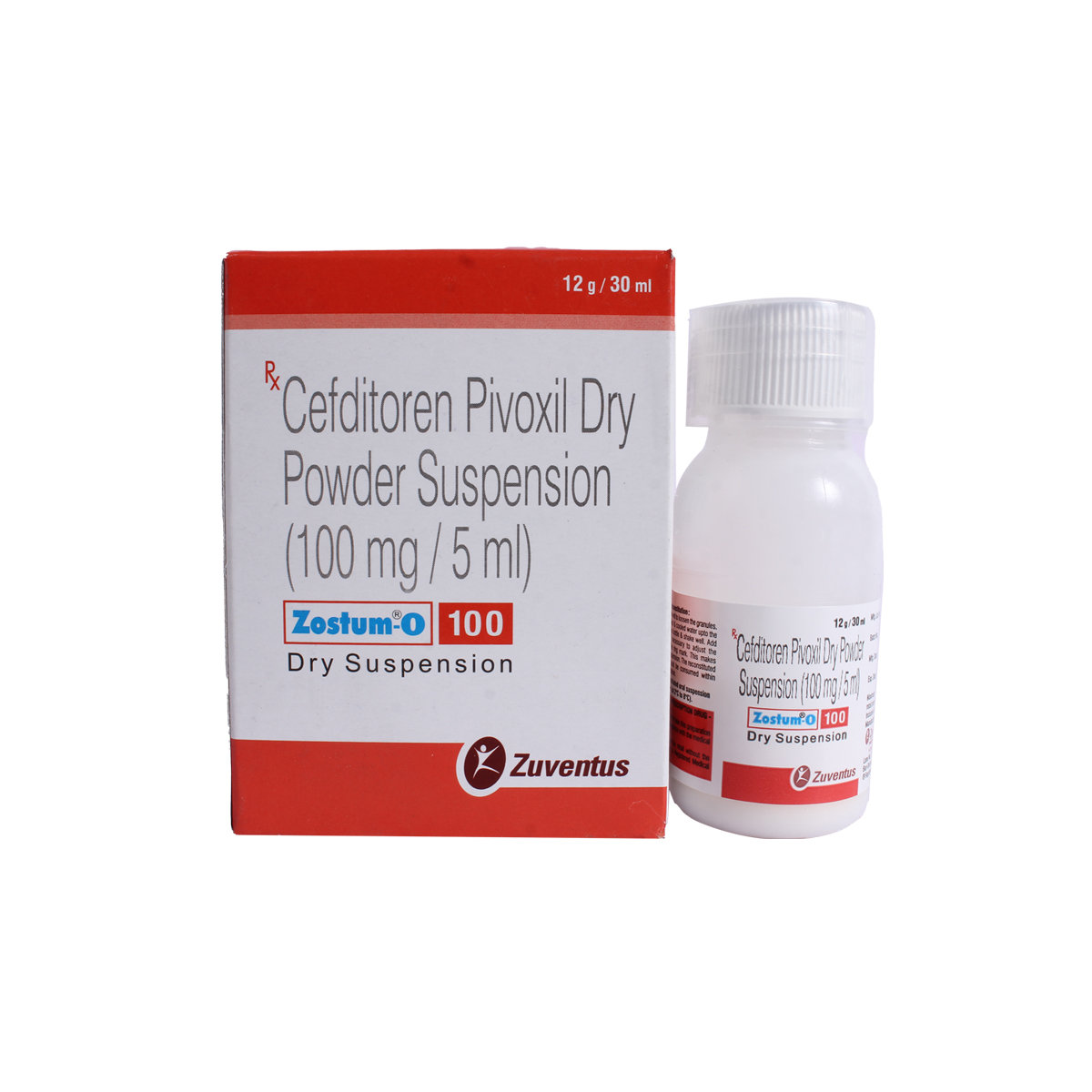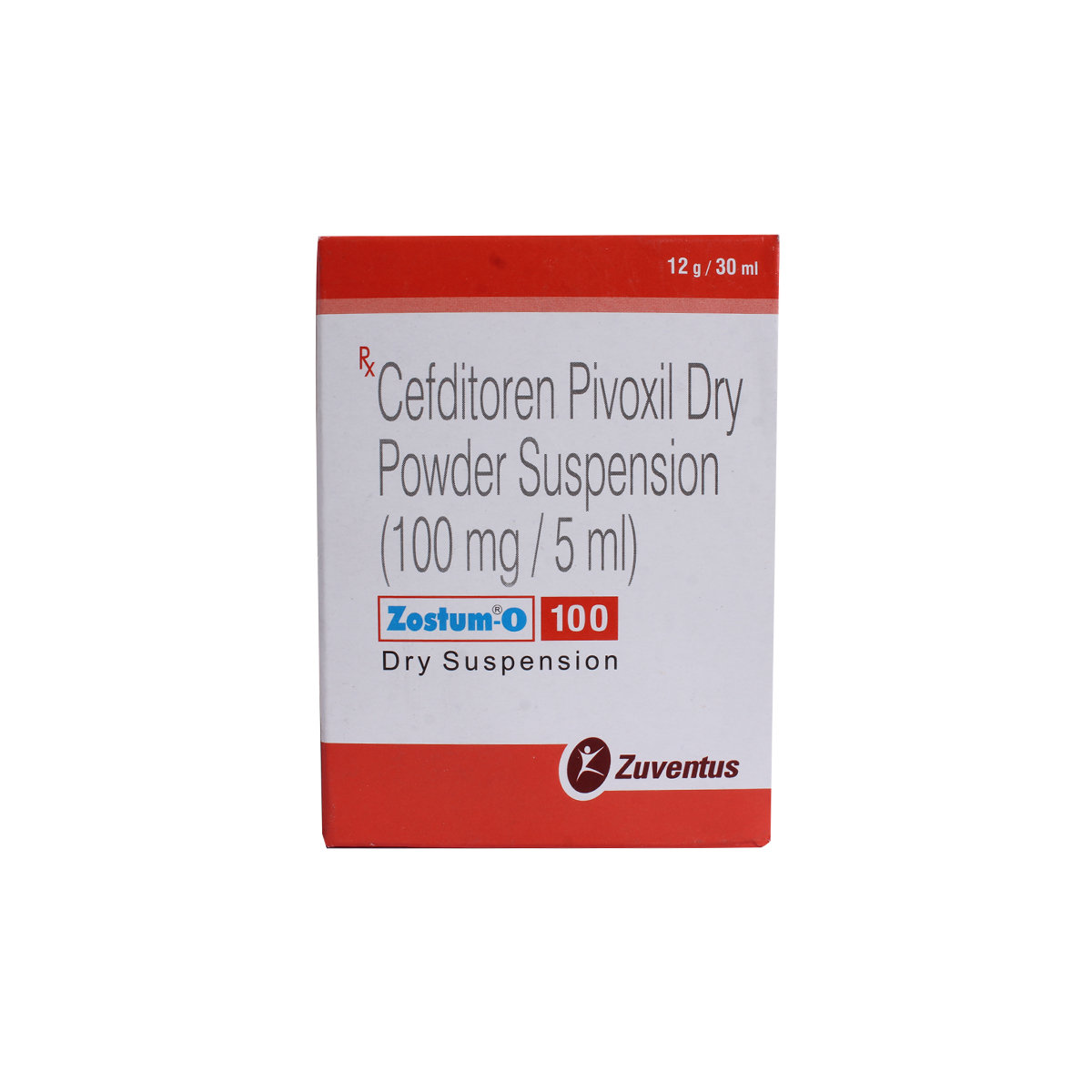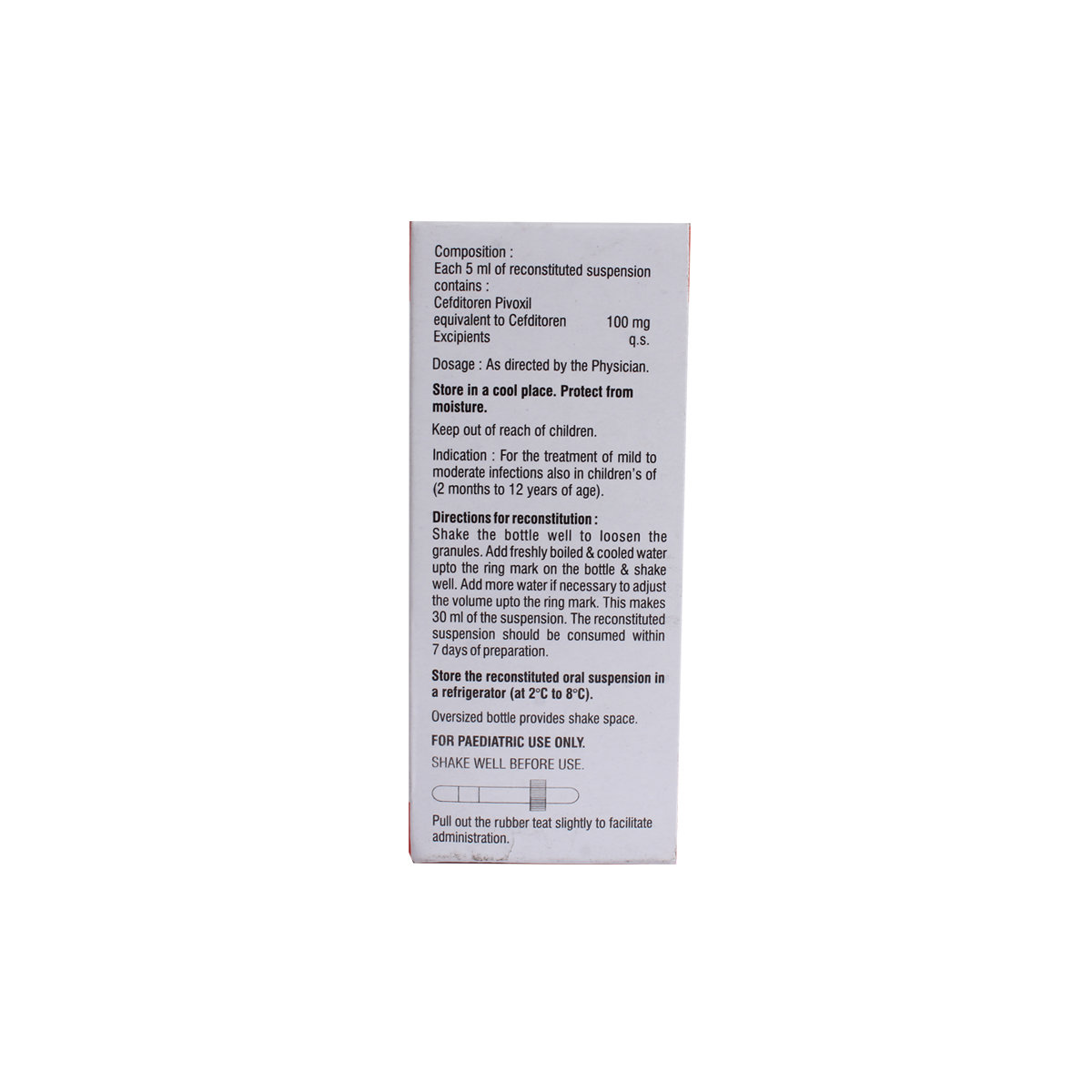Zostum O 100 mg Dry Suspension 30 ml








MRP ₹190
(Inclusive of all Taxes)
₹28.5 Cashback (15%)
Provide Delivery Location
Online payment accepted
 Prescription drug
Prescription drugWhats That
Composition :
Manufacturer/Marketer :
Consume Type :
Return Policy :
Expires on or after :
About Zostum O 100 mg Dry Suspension
Zostum O 100 mg Dry Suspension is an antibiotics medicine used to treat bacterial infections in children. It is used in treating mild to moderate infections of the skin, throat, and lungs such as pneumonia and bronchitis (infection in the airway tubes) caused by bacteria. A bacterial infection occurs when harmful bacteria grow in the body. It can infect any part of the body and multiply very quickly. Zostum O 100 mg Dry Suspension is only effective in treating infections caused by bacteria and not effective for viral infections like flu or a common cold.
Zostum O 100 mg Dry Suspension contains Cefditoren an antibiotic belonging to the cephalosporin class of drugs. It works by inhibiting the formation of the bacterial cell wall (a protective covering) that is necessary for their survival. This causes damage to the bacterial cell wall and eventually leads to the death of the bacterial cell. Thus, it prevents the growth of bacterial infections.
Zostum O 100 mg Dry Suspension may cause certain side effects in your child such as indigestion, diarrhea, and stomach pain. These side effects do not require medical attention and gradually resolve over time. However, if the side effects persist or worsen, please consult your paediatrician. Zostum O 100 mg Dry Suspension should be taken as advised by your doctor. Before giving it to your child, mix the contents of the container with the boiled water and then administer it. Do not give more than the prescribed dose of Zostum O 100 mg Dry Suspension to the child. Generally, the dose of the medicine will be decided by your paediatrician depending upon the type and severity of the infection.
Zostum O 100 mg Dry Suspension is intended for paediatric use only. Avoid giving Zostum O 100 mg Dry Suspension to your child if she/he is allergic to antibiotics. Before administration, inform your child’s doctor about liver and kidney disease. Let your doctor know if your child has pre-existing renal or liver disease. Keep your doctor informed about your child’s health condition including his current medications and medical history to rule out any side effects/interactions.
Uses of Zostum O 100 mg Dry Suspension
Directions for Use
Medicinal Benefits
Zostum O 100 mg Dry Suspension contains cefditoren. It is a broad-spectrum cephalosporin antibiotic that acts against both aerobic (grow in the presence of oxygen) and anaerobic (grow in the absence of oxygen) bacteria. Zostum O 100 mg Dry Suspension is used in the treatment of several bacterial infections in children. Zostum O 100 mg Dry Suspension works by inhibiting the formation of the bacterial cell wall (a protective covering) that is necessary for their survival. This causes damage to the bacterial cell wall and eventually leads to the death of the bacterial cell. Thus, it prevents the growth of bacterial infections.
Storage
- Inform Your Doctor: Notify your doctor immediately about your diarrhoea symptoms. This allows them to adjust your medication or provide guidance on managing side effects.
- Stay Hydrated: Drink plenty of fluids to replace lost water and electrolytes. Choose water, clear broth, and electrolyte-rich drinks. Avoid carbonated or caffeinated beverages to effectively rehydrate your body.
- Follow a Bland Diet: Eat easy-to-digest foods to help firm up your stool and settle your stomach. Try incorporating bananas, rice, applesauce, toast, plain crackers, and boiled vegetables into your diet.
- Avoid Trigger Foods: Steer clear of foods that can worsen diarrhoea, such as spicy, fatty, or greasy foods, high-fibre foods, and dairy products (especially if you're lactose intolerant).
- Practice Good Hygiene: Maintain good hygiene to prevent the spread of infection. To stay healthy, wash your hands frequently, clean and disinfect surfaces regularly, and avoid exchanging personal belongings with others.
- Take Anti-Diarrheal Medications: If your doctor advises, anti-diarrheal medications such as loperamide might help manage diarrhoea symptoms. Always follow your doctor's directions.
- Keep track of your diarrhoea symptoms. If they don't get better or worse or are accompanied by severe stomach pain, blood, or dehydration signs (like extreme thirst or dark urine), seek medical help.
- Inform your doctor about the nausea and discuss possible alternatives to the medication or adjustments to the dosage.
- Divide your daily food intake into smaller, more frequent meals to reduce nausea.
- Opt for bland, easily digestible foods like crackers, toast, plain rice, bananas, and applesauce.
- Avoid certain foods that can trigger nausea, such as fatty, greasy, spicy, and smelly foods.
- Drink plenty of fluids, such as water, clear broth, or electrolyte-rich beverages like coconut water or sports drinks.
- Use ginger (tea, ale, or candies) to help relieve nausea.
- Get adequate rest and also avoid strenuous activities that can worsen nausea.
- Talk to your doctor about taking anti-nausea medication if your nausea is severe.
- Record when your nausea occurs, what triggers it, and what provides relief to help you identify patterns and manage your symptoms more effectively.
- Hydrate your body: Drink enough water to prevent dehydration and headaches.
- Calm Your Mind: Deep breathing and meditation can help you relax and relieve stress.
- Rest and Recharge: Sleep for 7-8 hours to reduce headache triggers.
- Take rest: lie down in a quiet, dark environment.
- Cold or warm compresses can help reduce tension.
- Stay Upright: Maintain good posture to keep symptoms from getting worse.
- To treat headaches naturally, try acupuncture or massage therapy.
- Over-the-counter pain relievers include acetaminophen and ibuprofen.
- Prescription Assistance: Speak with your doctor about more substantial drug alternatives.
- Severe Headaches: Seek emergency medical assistance for sudden, severe headaches.
- Frequent Headaches: If you get reoccurring headaches, consult your doctor.
- Headaches with Symptoms: Seek medical attention if your headaches include fever, disorientation, or weakness.
- Drink water or other clear fluids.
- To prevent worsening of pain, limit intake of tea, coffee, or alcohol.
- Include bland foods like rice, toast, crackers, and rice in your diet.
- Avoid lying down immediately after eating as it may cause indigestion or heartburn.
- Avoid acidic and spicy food as it may cause indigestion.
- Take medications with food (if recommended): It can help prevent stomach distress and indigestion.
- Eat smaller, more frequent meals: Divide daily food intake into smaller, more frequent meals to ease digestion.
- Avoid trigger foods: Identify and avoid foods that trigger indigestion, such as spicy, fatty, or acidic foods.
- Stay upright after eating: Sit or stand upright for at least 1-2 hours after eating to prevent stomach acid from flowing into the oesophagus.
- Avoid carbonated drinks: Avoid drinking carbonated beverages, such as soda or beer, which can worsen indigestion.
- Manage stress: To alleviate indigestion, engage in stress-reducing activities like deep breathing exercises or meditation.
- Consult a doctor if needed: If indigestion worsens or persists, consult a healthcare professional to adjust the medication regimen or explore alternative treatments.
- Preventing Vomiting (Before it Happens)
- Take medication exactly as prescribed by your doctor. This can help minimize side effects, including vomiting.
- Having a small meal before taking your medication can help reduce nausea and vomiting.
- Talk to your doctor about taking anti-nausea medication along with your prescribed medication.
- Managing Vomiting (If it Happens)
- Try taking ginger in the form of tea, ale, or candy to help alleviate nausea and vomiting.
- What to Do if Vomiting Persists
- Consult your doctor if vomiting continues or worsens, consult the doctor for guidance on adjusting your medication or additional treatment.
Drug Warnings
As Zostum O 100 mg Dry Suspension is an antibiotic, it can cause drug resistance. Hence, do not stop giving Zostum O 100 mg Dry Suspension to your child even if he/she feels better.
Drug-Drug Interactions
Drug-Drug Interactions
Login/Sign Up
When BCG vaccine is taken with Zostum O 100 mg Dry Suspension 30 ml, its effectiveness may be reduced.
How to manage the interaction:
Although taking Zostum O 100 mg Dry Suspension 30 ml and BCG vaccine together can evidently cause an interaction, it can be taken if your doctor has suggested it. However, if you experience any unusual symptoms consult a doctor. Do not stop using any medications without talking to a doctor.
Taking the cholera vaccine after or along with Zostum O 100 mg Dry Suspension 30 ml may reduce the activity of the vaccine.
How to manage the interaction:
Although taking Zostum O 100 mg Dry Suspension 30 ml and Cholera, live attenuated together can evidently cause an interaction, it can be taken if your doctor has suggested it. Make sure to inform the doctor if you are on Cholera vaccine dose or you have already taken it. You should wait at least 14 days after finishing your antibiotic treatment before receiving the cholera vaccine in order to ensure an appropriate immune response. In case of any unusual side effects, consult a doctor. Do not stop using any medications without a doctor's advice.
Taking these medications together might make it harder for your body to absorb atazanavir, which could make it less effective.
How to manage the interaction:
v
Drug-Food Interactions
Drug-Food Interactions
Login/Sign Up
Diet & Lifestyle Advise
- Include more fibre-enriched food in your child’s diet, as it can be easily digested by your gut bacteria, which helps stimulate their growth.
- Fibre foods may help restore healthy gut bacteria after a course of antibiotics.
- Avoid giving too much calcium, or iron-enriched foods, as it might affect the working of Zostum O 100 mg Dry Suspension.
Side Effects of Zostum O 100 mg Dry Suspension
- Nausea
- Diarrhoea
- Stomach upset
- Indigestion
Habit Forming
Therapeutic Class
All Substitutes & Brand Comparisons
Author Details
We provide you with authentic, trustworthy and relevant information
Drug-Diseases Interactions
Drug-Diseases Interactions
Login/Sign Up
FAQs
Zostum O 100 mg Dry Suspension works by inhibiting the formation of the bacterial cell wall (a protective covering) that is necessary for their survival. This causes damage to the bacterial cell wall and eventually leads to the death of the bacterial cell. Thus, it prevents the growth of bacterial infections.
Zostum O 100 mg Dry Suspension can cause diarrhea in children. Zostum O 100 mg Dry Suspension is an antibiotic that kills toxic bacteria, but it can also affect the useful bacteria in your intestine or stomach and lead to diarrhea. If your child has diarrhea that is watery or bloody, call your doctor. Do not use anti-diarrhea medicine unless your paediatrician tells you to.
Drug-Drug Interactions Checker List
- TYPHOID VACCINE
- CHOLERA VACCINE
Special Advise
Disease/Condition Glossary
Bacterial infection: A bacterial infection occurs when harmful bacteria enter, grow, and infect the body. It can infect any part of the body and multiply very quickly. These infections vary from minor illnesses to severe brain infections like meningitis and encephalitis. When your child gets infected with these germs, they can experience generalized symptoms, like fevers, chills, and fatigue. Children with a weak immune system are more prone to infections.

Have a query?
Buy best Infections & Infestation products by
Cipla Ltd
Macleods Pharmaceuticals Ltd
Alkem Laboratories Ltd
Lupin Ltd
Abbott India Ltd
Sun Pharmaceutical Industries Ltd
Mankind Pharma Pvt Ltd
Micro Labs Ltd
Aristo Pharmaceuticals Pvt Ltd
FDC Ltd
Intas Pharmaceuticals Ltd
Glenmark Pharmaceuticals Ltd
Ipca Laboratories Ltd
Torrent Pharmaceuticals Ltd
Zydus Healthcare Ltd
Biochem Pharmaceutical Industries Ltd
Zuventus Healthcare Ltd
United Biotech Pvt Ltd
Hetero Drugs Ltd
Emcure Pharmaceuticals Ltd
Alembic Pharmaceuticals Ltd
Indoco Remedies Ltd
Fusion Health Care Pvt Ltd
Dr Reddy's Laboratories Ltd
Leeford Healthcare Ltd
Cadila Healthcare Ltd
Wockhardt Ltd
Zydus Cadila
GlaxoSmithKline Pharmaceuticals Ltd
Morepen Laboratories Ltd
Blue Cross Laboratories Pvt Ltd
Cadila Pharmaceuticals Ltd
Converge Biotech Pvt Ltd
Elder Pharmaceuticals Ltd
Hetero Healthcare Pvt Ltd
Pfizer Ltd
AAA Pharma Trade Pvt Ltd
Gufic Bioscience Ltd
Mylan Pharmaceuticals Pvt Ltd
Corona Remedies Pvt Ltd
Wallace Pharmaceuticals Pvt Ltd
Apex Laboratories Pvt Ltd
Medishri Healthcare Pvt Ltd
Akumentis Healthcare Ltd
Alniche Life Sciences Pvt Ltd
Hegde & Hegde Pharmaceutica Llp
Veritaz Healthcare Ltd
Ranbaxy Laboratories Ltd
Koye Pharmaceuticals Pvt Ltd
Shreya Life Sciences Pvt Ltd
Overseas Health Care Pvt Ltd
Biocon Ltd
Indchemie Health Specialities Pvt Ltd
Medley Pharmaceuticals Ltd
Brinton Pharmaceuticals Ltd
J B Chemicals & Pharmaceuticals Ltd
Unifaith Biotech Pvt Ltd
Ajanta Pharma Ltd
Biochemix Health Care Pvt Ltd
Natco Pharma Ltd
Samarth Life Sciences Pvt Ltd
Unichem International
Laborate Pharmaceuticals India Ltd
Unipark Biotech Pvt Ltd
Zymes Bioscience Pvt Ltd
Indiabulls Pharmaceuticals Pvt Ltd
Neon Laboratories Ltd
Vasu Organics Pvt Ltd
DR Johns Lab Pharma Pvt Ltd
East West Pharma India Pvt Ltd
La Renon Healthcare Pvt Ltd
Medgen Drugs And Laboratories Pvt Ltd
Novartis India Ltd
Canixa Life Sciences Pvt Ltd
Icarus Health Care Pvt Ltd
Lincoln Pharmaceuticals Ltd
Celon Laboratories Pvt Ltd
Concept Pharmaceuticals Ltd
Klm Laboratories Pvt Ltd
Nicholas Piramal India Ltd
Systopic Laboratories Pvt Ltd
Yuventis Pharmaceuticals
Capital Pharma
German Remedies Ltd
Pristine Pearl Pharma Pvt Ltd
Unison Pharmaceuticals Pvt Ltd
Aurz Pharmaceutical Pvt Ltd
Clover Health Care Pharma
Kepler Healthcare Pvt Ltd
Allites Life Sciences Pvt Ltd
Auspharma Pvt Ltd
Intra Life Pvt Ltd
Jolly Healthcare
Linux Laboratories Pvt Ltd
Ozone Pharmaceuticals Ltd
Cachet Pharmaceuticals Pvt Ltd
Comed Chemicals Ltd
Delcure Life Sciences Ltd
Fresenius Kabi India Pvt Ltd
Khandelwal Laboratories Pvt Ltd
Alcohol
Not applicable
-
Pregnancy
Not applicable
-
Breast Feeding
Not applicable
-
Driving
Not applicable
-
Liver
Caution
Please consult your doctor if your child has a liver impairment or if you have any concerns regarding this before using Zostum O 100 mg Dry Suspension.
Kidney
Caution
Please consult your doctor if your child has a kidney impairment or if you have any concerns regarding this before using Zostum O 100 mg Dry Suspension.
Children
Safe if prescribed
Zostum O 100 mg Dry Suspension is safe for children above two months if prescribed by the doctor. The safety and effectiveness of Zostum O 100 mg Dry Suspension in children below two months have not been established.



.jpg?tr=q-85)

